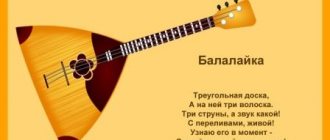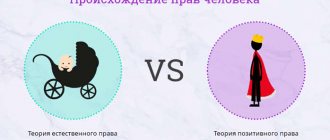Slide captions:
State budgetary educational institution of the Samara region, basic secondary school in the village of Koshelevka, Syzransky municipal district, Samara region N.N. Nosov “On the Hill” Literary reading lesson in 2nd grade Developed by: Sukhareva O.A. primary school teacher
TYPE OF LESSON: combined OBJECTIVES: 1. To familiarize students with the content of the story. 2. Learn to divide the text into parts, make a plan, find the main idea, and present in detail what you read. 3. Develop reading skills, coherent speech, thinking, memory, attention. 4. Foster hard work and respect for other people’s work.
Are you familiar with this hero? — Which writer wrote a book about this hero? — What works of this author do you know?
Find a portrait of N. Nosov among the portraits of other writers 1 2 3 4
Test yourself Test based on N. Nosov's story “The Living Hat” 1. What was the kitten's name? a) Murzik; b) Vaska; c) Fluff 2. What was the kitten doing at the beginning of the story? a) I sat on the floor near the chest of drawers and caught flies; b) Slept on the sofa; c) Played with the boys. 3. What kind of tail did the cat have? a) white; b) gray;. c) black 4. Where was the hat? a) on the table; b) on the chest of drawers; c) on the shelf
5. Why did the hat fall? a) the cat grabbed onto it; b) the wind blew; c) the guys hit me; 6. What were the names of the boys - the heroes of the story? a) Lesha and Dima; b) Tolya and Kolya; c) Volodya and Vadik. 7. What weapon did the boys choose to fight the hat? a) Cucumbers; b) Potatoes; c) Apples. 8. Who was the first to reveal the secret of the “living” hat? a) Volodya; b) Vadik
Key to the test 1 question 2 question 3 question 4 question b a b b 5 question 6 question 7 question 8 question a c b a
Solve the anagram Г — — ь О — — — ь Р — — — — ь К — — — — — ь А — — — — — — ь ГУС О AUTUMN BELT SHIP A QUAREL
Answer the questions based on the text - Did you like the work of N.N. Nosova? — Have there been similar situations in your life? Tell us about it. - Which of you more accurately guessed what will be discussed in the work? - What genre does it belong to? Why do you think so? —What mood does this story evoke? Why? — Do you want to read it expressively yourself?
Physical school One, two, one, two - (clap our hands) The game begins. We rake the snow with a shovel, (imitate the movements) We build a slide in the yard. The yard is decorated with white and fluffy cotton wool (we stretch our arms forward, turn the body to the right and left) in December. One, two, one, two (we stomp rhythmically) So the game is over.
Read the poem by V. Volina, choosing the appropriate intonation: confidence, surprise, resentment, dissatisfaction, condemnation, threat Kolya Knopkin has lived in our house for five years. He doesn’t make trouble, doesn’t get sick, doesn’t fight, doesn’t roar... This boy is growing up by leaps and bounds... This boy can’t do anything in the world on his own: Neither clean his bed, nor lace his shoe.
Vocabulary work Dvornitskaya is a room for a janitor, a worker who maintains order and cleanliness on the street. On all fours - a pose in which a person stands while leaning on both arms and legs
Find a proverb that expresses the main idea of the story 1. If you hurry, you will make people laugh. 2. Measure seven times and cut once. 3. Know how to make a mistake, know how to get better.
Place the pictures in order 3 1 4 5 2
plan 1. The guys are building a slide. (+) 2. Sly Kotka looks out the window. (-) 3. The sly guy on the slippery slide. (+) 4. Kotka ruined the slide with sand. (+) 5. The guys scold Kotka (+) 6. Kotka helps the guys. (+) 7. Kotka is making steps. (-)
Homework Retelling the plan using plot pictures Draw a picture for the missing point in the plan “The cat is making steps” Make up a cluster or syncwine for the word “Friends”
For what purpose did N. Nosov write the story “On the Hill”? 1. Make readers laugh 2. Make fun, laugh at the guys. 3. Show that you shouldn’t be afraid to admit and correct your mistakes.
Lesson summary 1. I learned... 2. It was interesting... 3. It was difficult... 4. What I liked most was... 5. I realized that...
Class:
2
Summary of a literary reading lesson in 2nd grade. N. Nosov. "On the Hill"
Summary of a literary reading lesson in 2nd grade.
N. Nosov. "On the Hill"
Type: combined lesson
Form of organization of the educational process: frontal, individual
Goal: to introduce students to N. Nosov’s story “On the Hill”
Tasks:
Educational
Building flexibility and reading speed
Formation of reading skills.
Developmental
Develop literary speech, the ability to express one’s own opinion.
Develop attention and memory.
Forming your own impressions and experiences when reading a literary text
Educators: Create conditions for the formation of moral ideas in students. Cultivate a sense of camaraderie, kindness, responsiveness, and the desire to do good deeds.
During the classes.
1.Organizational moment
The bell gave us a signal -
The time to work has come.
So let's not waste time
And we begin to work.
(On the board, the beginning of the phrase: “You have two hands. One to help yourself, the other to...”)
- What do you think the continuation of the phrase could be?
- Wish each other well. 2. Introductory conversation - Look, I have an exhibition of books on my board. Do you know the author of these books? (yes) - Name it. (N. Nosov) - Raise your hands, who is familiar with his works? (On the board are illustrations for N. Nosov’s stories “Patch”, “Cucumbers”, “Mishkina Porridge”.)
– Determine what works these illustrations were made for,
(These are illustrations for the stories “Patch”, “Cucumbers”, “Mishkina Porridge”. The author of these books is Nikolai Nosov.)
Acquaintance with the biography of the author.
— Your comrades will tell you some information from the biography of Nikolai Nosov. You listen carefully. Think about how many parts this text can be divided into. (advanced task)
Nikolai Nikolaevich Nosov was born in Kyiv. His father was an actor, his mother raised four children. She was a needlewoman and a singer, a very sensitive person. Since childhood, Nikolai was a closed and insecure person. Since childhood, his hobbies have been varied. He studied music, singing and amateur theater, and was interested in exact sciences: chemistry, electrical engineering, chess, photography.
How did it happen that the “grumpy guy” Nikolai Nosov nevertheless became known to us not as a chemist, photographer or film director, but precisely as a children’s writer? Nikolai Nosov loved to tell his son various funny stories, making them up as he went. Gradually he realized that composing for children was the best activity. It requires not only literary knowledge, but also love and respect for children. He knew how to magically become a child, see the world through his eyes, feel it with his soul, speak with his language. Fantasy is the quality that, preserving the memory of childhood, helped Nikolai Nosov become one of the most beloved and famous children's writers.
The heroes of N. Nosov's stories win the hearts of readers from the first minutes. Naive, mischievous, inquisitive fidgets constantly find themselves in unusual, often funny situations. Young readers recognize themselves and their friends in responsive, ready to help others, active, open-minded guys.
Student. – This text can be divided into three parts.
On the board are the words:
The writer's childhood, How he became a writer, His heroes
Setting the lesson topic
- The incident that we will read about today happened... To do this, guess the riddle:
a) Guess what time of year we are talking about -
Now the clouds are catching up with the north, They breathed, howled, and then the sorceress herself comes...
(Winter)
They slapped me with a spatula, they made me hunchbacked, they beat me, stabbed me, they poured ice water on me. And then they all rolled off my hump in a herd.
— The story we are going to read is called “On the Hill.”
What do you think this story will be about?
1. Practice the skill of reading difficult words.
Raked; Dumped; Pushed off; To the janitor's room; Climbed; On knees; Slippery; Climb.
2. Vocabulary work.
A janitor's area is a room for a janitor or an employee who maintains order and cleanliness on the street.
3. Initial reading of the story (teacher + children).
Did you like the story?
— What did you especially like about it? Why?
- Let's check how carefully you listened to the story. Read the questions, choose the correct answers. (Children work independently on pieces of paper.)
- What did the guys build in the yard? A) snow slide B) snow fortress C) snow woman What was Kotka doing during the construction of the slide? A) worked with the guys B) watched TV C) sat at home and watched others work. What did Kotka do when the guys left? A) quickly put on his skates and jumped out into the yard B) continued to watch TV C) began to build his own slide Why couldn’t Kotka climb the slide? A) the guys didn’t let me in B) the slide was high C) the slide was slippery What did Kotka come up with in order to climb the slide? A) sprinkled sand and climbed up B) decided to take a walk in another place C) called dad How did the guys react to Kotka’s action? A) they praised him and started skating together B) they scolded him and offered to correct him C) they beat him up and didn’t talk. What did Kotka do to correct his mistake? A) sprinkled snow on the slide and made steps B) brought candy and gave it to the kids C) didn’t fix anything
- Let's check the work.
(One student reads out the correct answers)
– The guys built a snow slide in the yard. During the construction of the slide, Kotka sat at home and watched others work. When the guys left, Kotka quickly put on his skates and ran out into the yard. But Kotka could not climb the hill. The slide was slippery. The boy sprinkled sand on the slide and climbed up. The guys scolded him and offered to correct the mistake. Kotka sprinkled the hill with snow and made steps.
Physical exercise Now we will all stand up together (children stand up) and rest a little (stretch). Turn right, turn left, (turns) Bend over, bow! (tilts) Hands up and hands to the side (movements with hands), And in place jump and jump! (jumping in place) Now go skipping (running in place), Well done, kids!
Secondary reading. Analysis of the work.
— To better understand the text, let’s read it again.
Part 1: chain reading - Who are the main characters of the story? (Kotka and his friends) - What were the guys doing? — Was it easy to make the slide? - Prove that they worked. — How does the author say that this is hard work? Part 2: Reading silently Assignment: Find words that characterize Kotka. -Which Kotka? Why? - What did Kotka do when the guys were working? - Why didn’t he come out? (didn’t want to) - What do you call a person who doesn’t want to work? (lazy) - What happened when the guys left? Part 3: find and read in this passage a small word that is repeated three times. - With the help of it, the author shows that Kotka constantly falls on the slide. The cat falls unexpectedly, instantly. At the same time, we seem to hear a dull heavy sound. - Notice how many words we used, and the author drew this picture with one word “boom” - Why did he fall? - What did he do then? - How did it end? - Kotka didn’t think what he was doing. What can we call it? (imprudent) Part 4: role-based reading. — With what intonation will we read the guys’ words? — How should Kotka’s words sound? — How did the guys react when they ran up the hill after lunch? - Why didn’t the boy immediately admit his crime? (frightened) - But then I found the strength and confessed. - What quality of character was demonstrated? (Honest, brave) - Was Kotka able to correct his mistake? How? - Who helped him with this? — What qualities of Kotka showed up here? (hardworking, caring, smart) - What is Kotka really like? - How do we see him at the beginning of the story and what did he become thanks to his comrades?
Conclusion: did this day teach him anything? Work in pairs - Now you will need to select one proverb from those proposed in the card that, in your opinion, most matches his main idea. Prove your choice.
Without work, rest is not sweet
Go to work with joy, and leave work with pride
They get healthy from work, but from laziness they get sick.
Patience and a little effort.
Know how to make a mistake - know how to get better
— What is your couple’s decision? — So, the main idea of the work “On the Hill” can be expressed in the words of the Russian proverb: “If you know how to make a mistake, you know how to get better.” And work will help you with this! Lesson summary.
“If a person has done something wrong, you must admit your mistake and try to improve.” The main thing is to be able to distinguish good from bad, forgive a friend for an ugly act, and help him not to do such a thing in the future. And if you make a mistake, try to correct the mistake immediately, try to become better. Work hard and you will succeed!
7. Reflection.
On the children's tables there are snowflakes cut out of paper. On the board there is a drawing of a slide.
— A slide for children was built in the courtyard of school No. 9. But she also found herself covered in sand. If you think the lesson was interesting and you worked actively, attach your snowflake to the slide. If it was difficult, then let your snowflake continue to fly.
(Children attach snowflakes to the board.)
- Guys, look what a beautiful snowy hill we have turned out to be. The kids from grade 0 and the mini center would be happy to ride down such a slide!
Giving marks + d\z (practice reading by roles with different intonation.)



